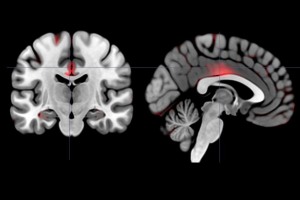Everyday experience and psychological studies alike tell us that there are two different types of extroverts: The gregarious people-persons” who find reward in sharing affection and affiliation with others, and the ambitious “go-getters” who flash those bright-white smiles in their pursuit of achievement and leadership agendas. A new study shows that these overlapping yet distinct personalities have commensurately overlapping yet distinct signatures in the anatomy of the brain.
“These are people just sharing with you how they tend to experience the world and what’s important to them,” said Tara White, assistant professor (research) of behavioral and social sciences at the Brown University School of Public Health and corresponding author of the new study. “The fact that that’s validated in the brain is really exciting. There’s a deep reality there.”
The report, published in Cognitive, Affective, and Behavioral Neuroscience, is based on structural MRI scans of 83 men and women ranging in age from 18 to 54. That makes it the first study to produce evidence of the physical similarities and differences between extrovert types in the brain across adulthood. One other study had made such observations only in seniors.
“This is the first glimpse of a benchmark of what the healthy adult brain looks like with these traits,” said White, who is based at Brown’s Center for Alcohol and Addiction Studies. She studies the neural basis of personality and how such personality differences change the way people respond to drugs and alcohol.

